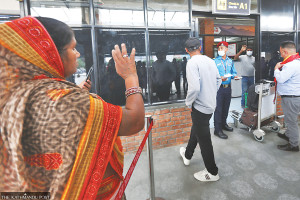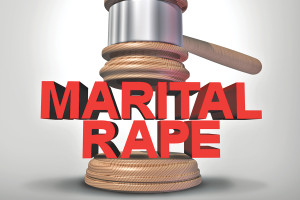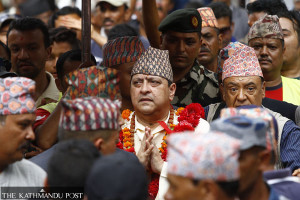 15.12°C Kathmandu
15.12°C KathmanduMiscellaneous
Behind the curtain
Writing a critique of a play can often be a daunting task. Unlike cinema, that can be stored for future viewing, a play’s life ends when the actors move off stage.
Timothy Aryal
Writing a critique of a play can often be a daunting task. Unlike cinema, that can be stored for future viewing, a play’s life ends when the actors move off stage. But the effort the producer, director and the cast put into making a play is about the same as for a movie production. The irony of the art of criticism is that you have to put aside all the sentimentality and judge the play for what it is and try to map a place for the play in the spectrum of recent and historic plays. And in a narrow theatre circuit like that of Kathmandu, where you often know the key players behind the theatre personally, critics invariably have to keep challenging themselves.
Even though a critic might be aware of the countless hours the team has practiced behind the scenes, the audience hardly is. And if the play doesn’t gratify their thirst, the audience will not and should not excuse the team. But then theatre is perhaps one of the hardest of all mediums of art, there is no room for an error or for waste. There is no time for an extra take; and everything—the setting, lighting, and the acts—should fall perfectly in place in a timely manner. It is all the more challenging for a theatre scene like Kathmandu’s, where the producers are putting out plays with limited resources. But excusing the makers for this would be regressive; the critic would then join in the perpetual circle of mediocrity.
“The critic is part of the whole… Has he an image of how a theatre could be in his community and is he revising this image around each experience he receives? How many critics see their job this way? It is for this reason that the more the critic becomes an insider, the better,” writes the British director Peter Brook in his book the Empty Space.
When I was going through these lines, it occurred to me that, staying on the sidelines and criticising the shortcoming of one show after another, is not going to help. I wanted to observe the play from the inside. So this week I decided to visit rehearsals of an upcoming play, Line, at Shilpee Theatre in Battisputali.
Line, a 1967 absurdist drama written by Israel Horovtz, is being adapted into Nepali and directed by Akanchha Karki, the director behind Yoni ka Kathaharu, a Nepali adaptation of The Vagina Monologues. Line tells the story of five people who lie, cheat and manipulate each other to be the first in line—even though one is not sure what the line is for. The line for an undefined cause prompts one to readily relate the struggle to become first in life itself.

“Human beings are beautiful, but also flawed. Sometimes in the struggle to get ahead, people stoop low enough to bring their intentions and motives to the spotlight,” director Karki says, speaking about the inspiration behind the show, “I stumbled upon Line when I was going through an overwhelming phase in life. I found it alluding to many relevant answers for some challenging times; times I had not been able to confront manipulative people who bend the situation to their advantage. Through this play, I channeled this negativity into a constructive performance.”
Perhaps one of the main motives of an absurdist drama is to highlight, celebrate and even scorn the futility of existence. By bringing to stage characters who are caught up in seemingly trivial and instantly relatable struggles, an absurdist drama compels one to relate the plot to the larger struggle of life itself.
On Wednesday, when I entered the theatre at Shilpee, there were no sets or lights as I was used to while going in to write a review; in the background was the set designed for the play Conference of the Birds which is currently on at the theatre. Line, the play, makes minimal use of settings and props; there were only a few chairs and a line drawn on the ground. That day, the actors performed a raw version of almost thirty pages of the script’s full forty pages. While director Karki took her place in the auditorium, guiding the actors to polish their craft—asking them either to deliver the lines in a more relaxed way or make the right navigations, while at times repeating to them the lines they have forgotten—and often offering to break down the traits of the characters to me. Since it was a cast made up of experienced actors, the director’s focus was to bring out the best out of them. The rehearsals began before Dashain and the perseverance of actors was visible on stage. Even though it was only a raw performance, one could tell, the play was beginning to find its final form.
In Kathmandu’s theatre scene, the staging of absurdist dramas come only few and far in between. In a country like ours, where critics on the public sphere often cheekily allude the parliament itself to the theatre of the absurd, perhaps the staging of plays such as Line is all the more relevant and welcome.
Director Karki said that she has tried to rid the play of class, gender and caste-based stereotypes in the best ways she could. Which is a humbling fact, when our arts are often created solely for commercial purpose, often ignoring the impact it might have on our culture—Chhakka Panja is the most recent example.
If cinema and theatre mirrors the society, we have seen the kind of society we live in, given the success of films like Chhakka Panja, which has only cheap gimmicks and unfocussed narrative to offer. But it is also the role of the artists to edify the audience and make them more critically discerning. The producers of Line are well aware of the fact. As director Akanchha puts it, “Because the idea of wanting to beat someone to top and using whatever tactic possible is universal—sometimes so much that people are ready to forget anything human—all of us have been cheated or have cheated someone in our lives, and sometimes it has to be shown to people in such a manner that they are compelled to reflect within. Well, one can hope.”
Pointing out a flaw in a work of art might be easy for a critic, but it is not sure that the critic won’t repeat the same flaw if s/he were to wear the hat of the artist. Only when they are well aware of the process of creation can they contribute to the art of the criticism and to the art form they are criticising. And for that I am glad I meandered into Shilpee during rehearsals this week, and will probably continue to do so in the years to come.
The staging of Line will commence at Shilpee Theatre in Battisputali from November 2.











.jpg&w=300&height=200)



